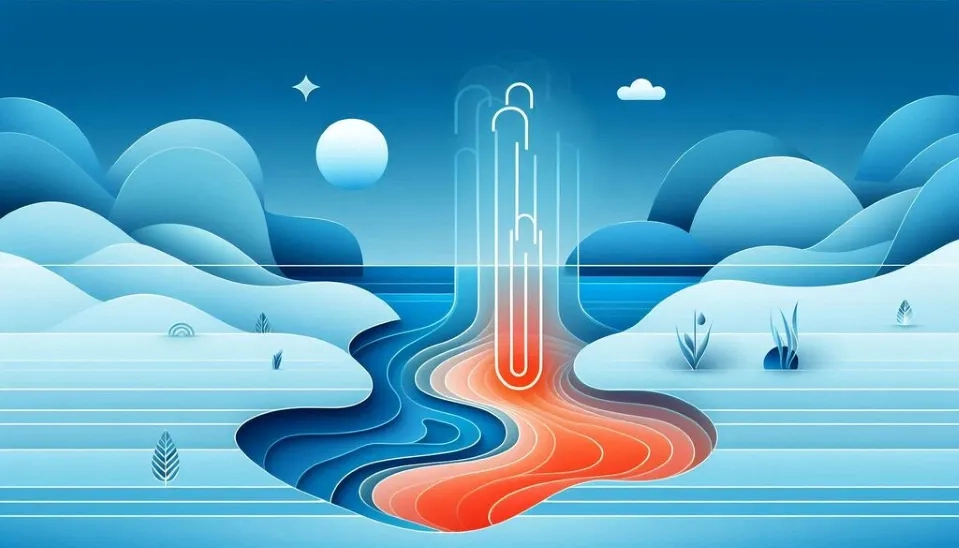
As the days go by, the earth is getting warmer and warmer due to the industrial revolution and population growth. This thermal change is no longer negligible and has become a major problem for the Earth (Amaal et al., 2020). Therefore, it is time to expand our knowledge and understanding of this matter and study aquatic thermal pollution, its causes, and its consequences. An aquatic thermal pollution disaster occurs when heated water is released from industries into the environmental waters, disturbing normal aquatic life and hydrogeochemical processes in the waters. This phenomenon is the result of hot water being released by nuclear or power stations and factories that use water as a coolant for their processes. Exonerating hot water raises the temperature of the water body. This temperature rise will be directed to the thermal layers of water bodies, where warm water stays at upper levels. In addition, thermal changes reduce the dissolved oxygen (DO) content in the water, which is detrimental to aquatic life. As an example, it can change the diversity of organisms that are capable of living at changed temperatures and DOs (Madhav et al., 2020). This is only an overview of our article; we go into greater detail about aquatic life, aquatic thermal pollution, and their interactions in the sections that follow.
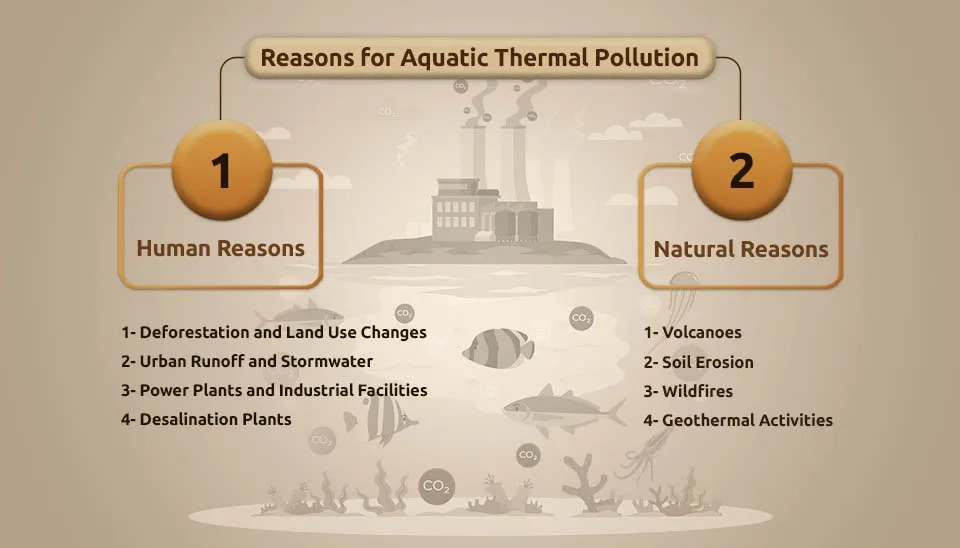
1. Aquatic Thermal Pollution
The issue of releasing water into the environment that changes its temperature is a major concern. This change can raise the temperature of source water or even lower it, compared to its ambient temperature, but it is more likely to heat source water. It has been argued that heat adds no harm or even improves the conditions, whereas in other cases it changes the whole ecosystem and aquatic life (Bobat, 2015). In general, all hydroelectric structures like power plants have negative impacts on the ecological balance of water, mainly by changing hydrologic characteristics such as flow regime, DO, pH, and temperature. In addition, many industries are affecting the environment through their waste and disposal systems. They include some sectors that use water as an input or as a part of a system. At the end of the process, the used water loses its freshwater properties and becomes wastewater (Issakhov & Zhandaulet, 2019). In addition to power plants and industries, desalination plants play a key role in causing thermal pollution. These plants need to use freshwater to treat saltwater, and this causes a thermal change when the used water is released as warm wastewater (Ahmadvand et al., 2019). At last, besides all the manufactured sources of thermal pollution, natural events can also cause it. Therefore, we discuss the two main causes of thermal pollution in the following paragraphs.

2. Reasons for Aquatic Thermal Pollution
Among all the reasons for aquatic thermal pollution, some factors affect the ambient temperature of water without any human intervention. On the other hand, most of the thermal pollution comes from human activities (Kalinowska, 2019). Consequently, the reasons for aquatic thermal pollution are divided into two categories, human reasons and natural reasons, which are explained in the following paragraphs.
2.1. Human Reasons
The investigation into thermal pollution revealed that manufacturers and human activities play a key role in heating water bodies. These activities can cause thermal pollution both directly and indirectly. This implies that certain activities directly release heated water into freshwater sources, thereby immediately altering the ambient temperature. However, some activities cause a condition that delays the cooling process for a long time and results in thermal pollution (McLachlan & Brown, 2006). To understand more about these human reasons, some examples are introduced.
2.1.1. Deforestation and Land Use Changes
Another reason for aquatic thermal pollution is cutting down trees, or deforestation and changing the usage of land as a result of population growth and the rise of agricultural demand. These actions intensify thermal pollution in two ways. Firstly, they cause soil erosion near lakes and streams and secondly, they remove shadows from water bodies, which increases sunlight reaching the lakes and streams (Arcadia, 2017).
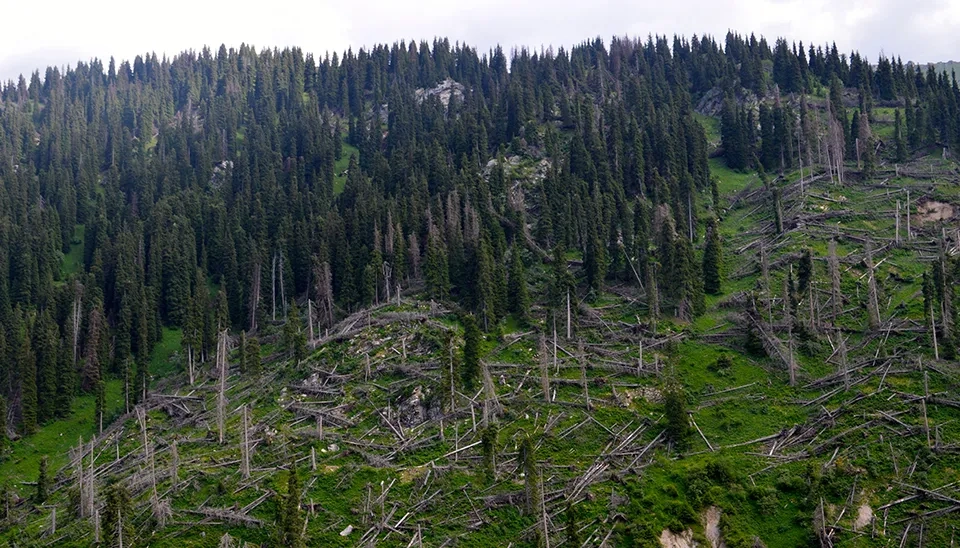
2.1.2. Urban Runoff and Stormwater
When a storm happens in an urban area, it causes urban runoff. As the stormwater pours down, it collects heat from buildings and city surfaces and then releases it into water bodies. As a result, stormwater and urban runoff have higher temperatures than the ambient temperature of water bodies. When they reach these water bodies, they increase their temperature, leading to thermal pollution (Wang et al., 2023).
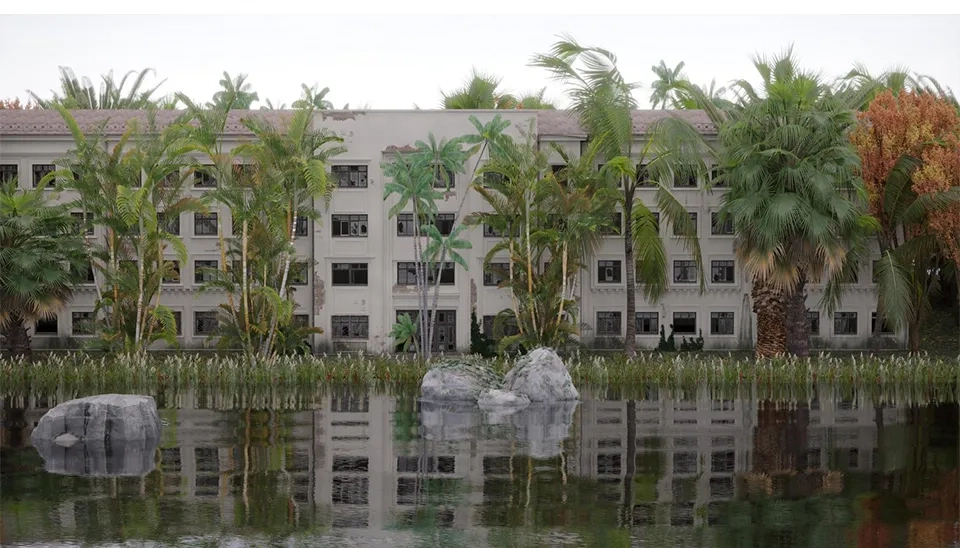
2.1.3. Power Plants and Industrial Facilities
There are different kinds of power plants in the world that use multiple types of inputs to generate power and electricity in different locations. For instance, thermoelectric power plants, coastal power plants, thermal power plants, and nuclear power plants are the main sources of thermal pollution in water bodies. Industrial facilities produce hot water as a byproduct of their operations (Issakhov & Zhandaulet, 2021). Aquatic thermal pollution is an inescapable result of the operations of various power plants and industrial facilities. Some of these plants pump water from lakes, rivers, and oceans to cool down their turbine condensers. Meanwhile, the water that was used as a coolant has a higher temperature compared to the source water when it returns as wastewater to its source (Madden et al., 2013).
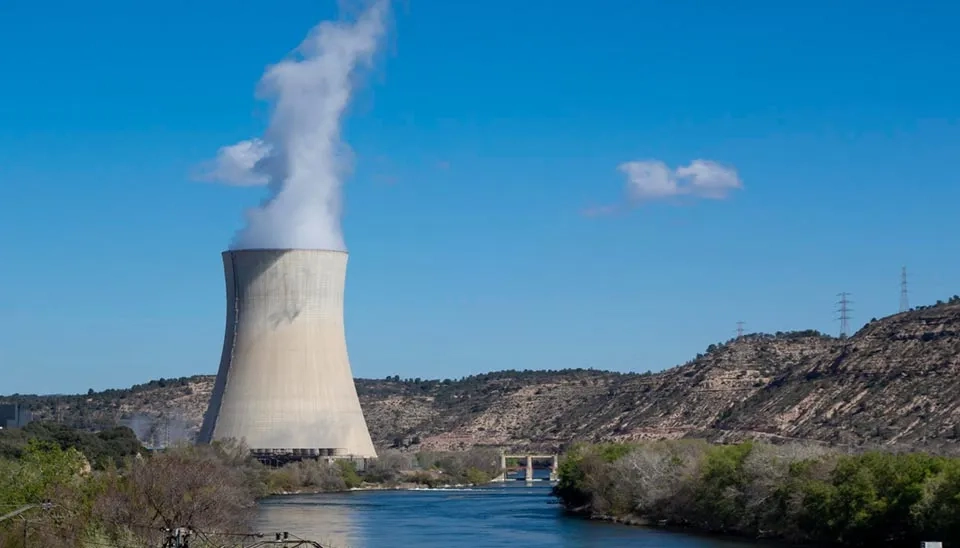
2.1.4. Desalination Plants
Desalination is one of the most common and widely used methods for desalting saline water like seawater. The basis for this process is the principle of water being a volatile substance and salt being a nonvolatile substance (Qasim et al., 2015). Despite the simple principle of desalination, its use in industries presents some noticeable issues. The salt solution, for example, precipitates and becomes more concentrated as freshwater evaporates from the vessel containing the seawater. This results in thermal conductivity degradation of vessel walls and tube clogging. To solve this problem, after gaining some freshwater from desalination, the remaining seawater must be discharged and a new amount of seawater must be collected instead. However, when the heated seawater is discharged, all the warmth is removed and the newly loaded seawater needs to be heated again (Kasaeian et al., 2019). Losing the heated water and releasing it into the water source changes the ambient temperature of the water body and causes thermal pollution in return.

2.2. Natural Reasons
There are some completely natural reasons for aquatic thermal pollution in the world. These natural activities include volcanoes, wildfires, and other natural conditions that contribute to thermal pollution (Ferguson & Woodbury, 2007).
2.2.1. Volcanoes
By volcano eruption, many greenhouse gases are released into the atmosphere. The main gas that accelerates global warming is CO₂. When the intensity of volcanic eruptions increases, more CO₂ emissions will be released into the atmosphere and water bodies will become warmer. In addition, if the volcanic ash reaches water sources, it will cause water pollution and increase water temperature rapidly (Yadav, 2019; George, 2014).

2.2.2. Soil Erosion
Natural conditions erode the soil when they wash away the top layer. This phenomenon results in wider and shallower beds for streams and lakes, which widens the surface exposed to sunlight and heats the water more than usual. The increase in water temperature can disrupt aquatic ecosystems by reducing dissolved oxygen levels and altering the habitat conditions for sensitive species. Over time, such changes can contribute to a decline in biodiversity and overall water quality. (National Geographic, 2023).
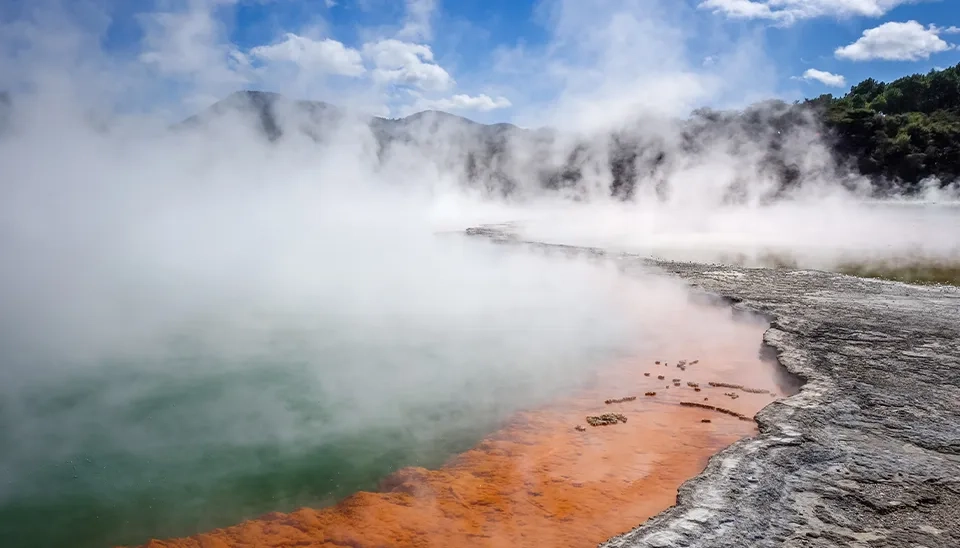
2.2.3. Wildfires
The world faces a major challenge that is increasingly widespread and severe wildfires, resulting from global warming and land use changes. The erosion of nutrients and ash contamination from burned slopes into rivers and water streams is one of the impacts. This erosion of nutrients brings a high amount of heat to the water bodies and causes aquatic thermal pollution (Paul et al., 2022).
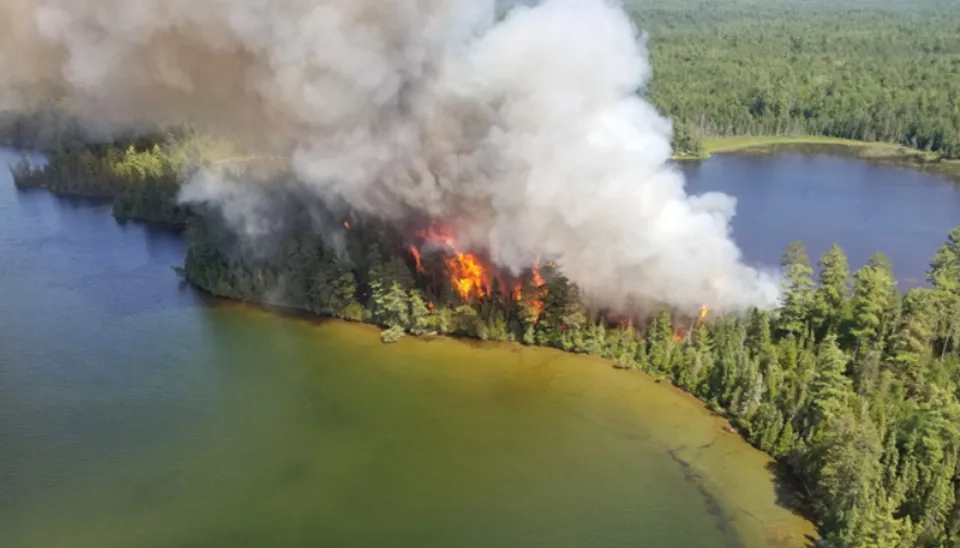
2.2.4. Geothermal Activities
Geothermal energy is defined as the heat energy generated through the earth. Activities involving geothermal energy cause both air and water pollution. For instance, underwater volcanoes, hot springs, geothermal vents, and geysers bring heat to the water bodies and change the normal temperature of water (ENVPK, 2021).
3. Aquatic Thermal Pollution Effects
Thermal pollution is capable of affecting the environment in different aspects. When the heat gets to the water, whether directly or indirectly, it harms the aquatic life and environment. As an example, the rise in water temperature alters the aquatic ecosystem and biodiversity. Increased temperature may not be tolerable for some aquatic species or it accelerates microbial growth that can result in DO reduction and a rise in metal bioavailability (White et al., 2017). These are some examples of aquatic thermal pollution effects and in the following paragraphs, more impacts will be expressed.
3.1. Altered Biodiversity and Food Web
As the heated water is discharged into water bodies, the affected areas start to change their temperature, and the thermal layering of lakes or streams changes as well. As a consequence of these changes, aquatic species begin to adapt themselves to new conditions. However, some of them cannot live under new conditions and die right away or migrate to other areas where they can survive (Wohlgemuth et al., 2017). These actions not only alter the biodiversity of aquatic life but also affect the food web in that area as well.

3.2. Dissolved Oxygen (DO) Reduction
The presence of dissolved oxygen (DO) is probably one of the most important factors affecting aquatic systems, and a great number of biological and physical interactions are associated with it. This property of water is very sensitive to water temperature; in such a way that when the temperature rises, the amount of DO will be reduced. Since metabolism depends on the availability of oxygen; when the temperature rises by 1-2 °C, some species may be eliminated. Additionally, the key to the absorption of organic waste by microorganisms is the amount of DO (Hamid et al., 2019). This assimilation will be impaired by thermal pollution and the heating of the water body.
3.3. Increased Risk of Toxic Substances and Pathogens
Thermal pollution can increase the susceptibility of aquatic organisms to parasites, toxins, and pathogens that could make them susceptible to various diseases. If thermal pollution continues for a long time, it can result in large amounts of bacteria and plant growth (Reichelt-Brushett et al., 2023).
3.4. Algae Blooms
Generally, algae blooms are attributed to increased levels of nitrates or phosphates. However, they may also result from rising water temperatures due to thermal pollution without a rise in nutrient concentration (Horvath & Brent, 1970). In other words, a systematic increase in water temperature causes algae blooms in water bodies and will lead to reductions in DO and many other harmful impacts on aquatic life. Algae's high growth consumes oxygen and blocks sunlight from underwater plants. As soon as the algae dies, it consumes oxygen underwater, leading to an oxygen shortage. Hence, the lack of oxygen makes it impossible for aquatic life to survive (EPA, 2022). Algal bloom control can be a beneficial way to preserve aquatic ecosystems, maintain adequate dissolved oxygen levels, and ensure the survival of diverse aquatic species.
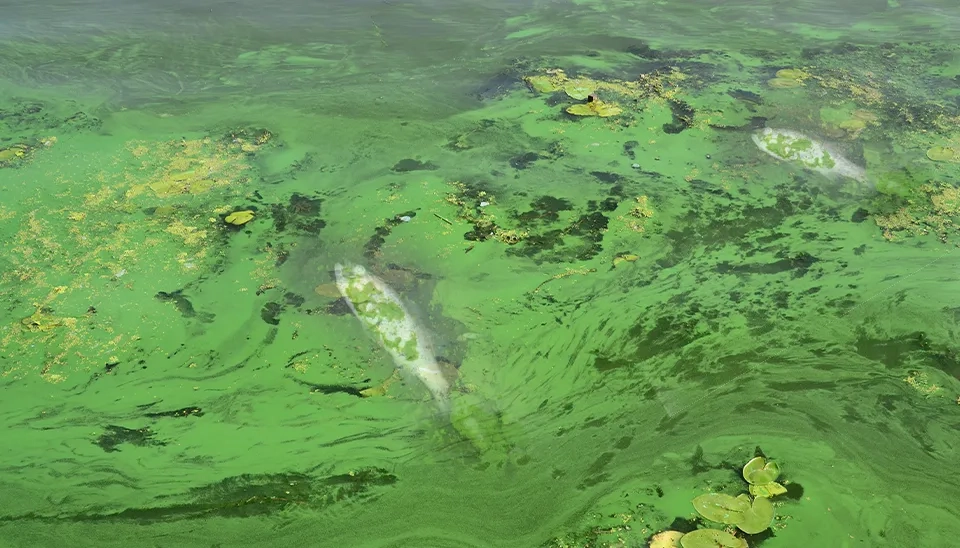
4. Conclusion
Various studies and research indicate that thermal pollution is a significant environmental issue that demands attention. When the ambient temperature of water bodies changes dramatically, thermal pollution becomes evident. Multiple sources, including both human activities and natural factors, contribute to this phenomenon. However, studies indicate that most thermal pollution originates from human activities such as power plants, their wastewater, and other sources. The primary reason for thermal pollution is the use of fresh water in the cooling equipment of plants and industries. In addition to sources of aquatic thermal pollution, it is crucial to understand the effects of this problem on aquatic life, environmental conditions, and ecosystem health. Discharging heated water into water bodies not only degrades water quality but also alters aquatic ecosystems. The diversity of species will decrease due to the elevated water temperature and its associated effects. To address this problem, further studies must be conducted, and new technologies must be implemented in industrial facilities and power plants.